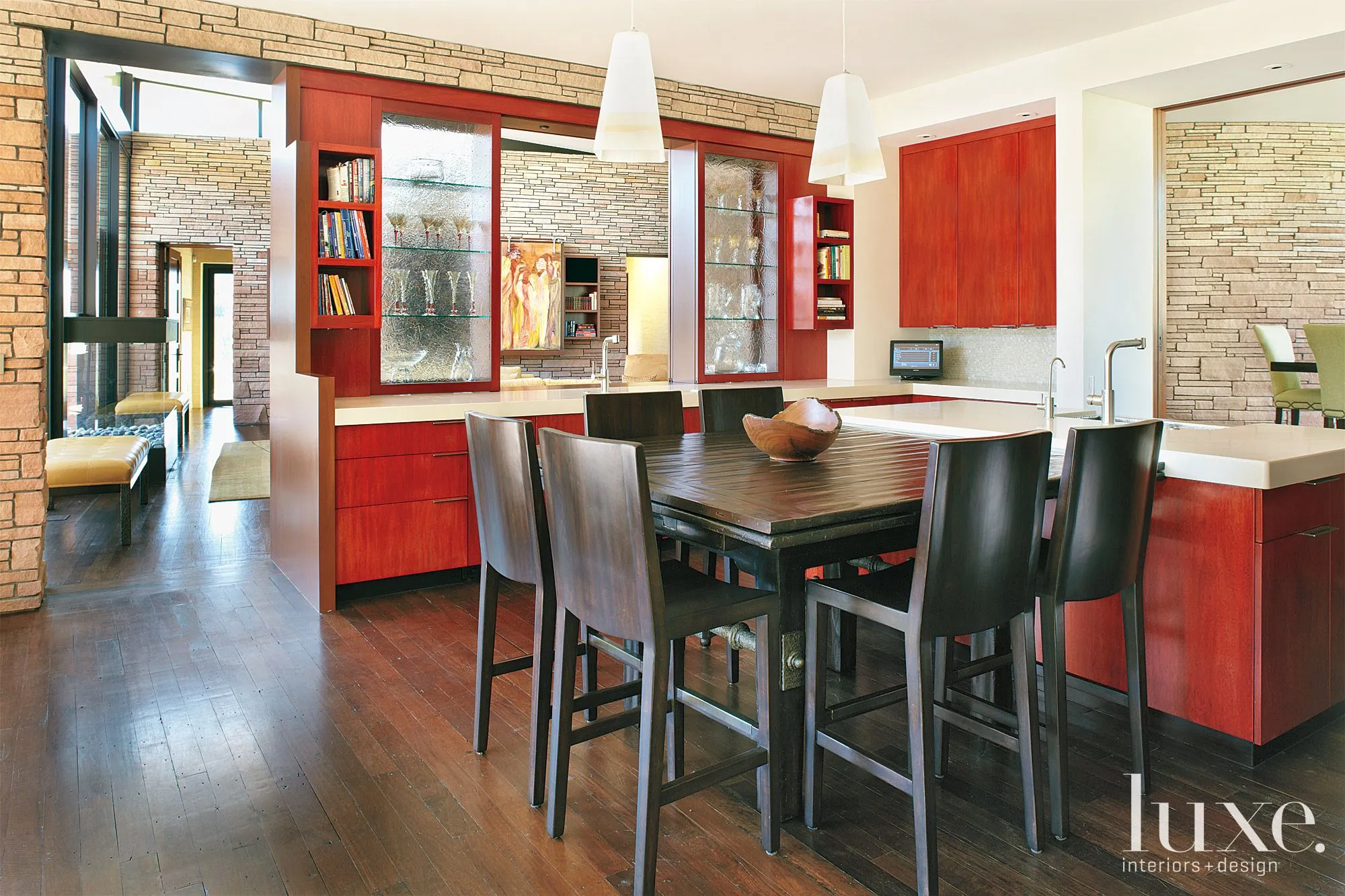What Defines Rustic Red Kitchen Paint?
Rustic red kitchen paint goes beyond a simple shade of red; it evokes a sense of warmth, history, and natural beauty. This paint style often features muted tones, influenced by the earth and its elements. Unlike bright, bold reds, rustic reds have underlying brown, orange, or even a hint of burgundy. These undertones contribute to a cozy, inviting atmosphere, making them ideal for kitchens where comfort and style are equally important. Think of the warmth of a Tuscan villa or the charm of a country cottage, and you’ll start to understand the essence of rustic red. It is about creating a space that feels lived-in, welcoming, and timeless, far removed from the starkness of modern minimalism.
Understanding the Color Red
To truly appreciate rustic red, it’s helpful to understand the color red itself. Red is one of the primary colors, associated with energy, passion, and excitement. In interior design, it can be a powerful tool, capable of transforming a space. However, the impact of red can vary widely depending on the specific shade. Brighter reds can be stimulating, making them a great choice for social spaces like dining areas, while deeper, more muted reds provide a sense of calm and sophistication. It is the undertones and the saturation levels that will decide how your red will impact the look and feel of your kitchen.
The Psychology of Red
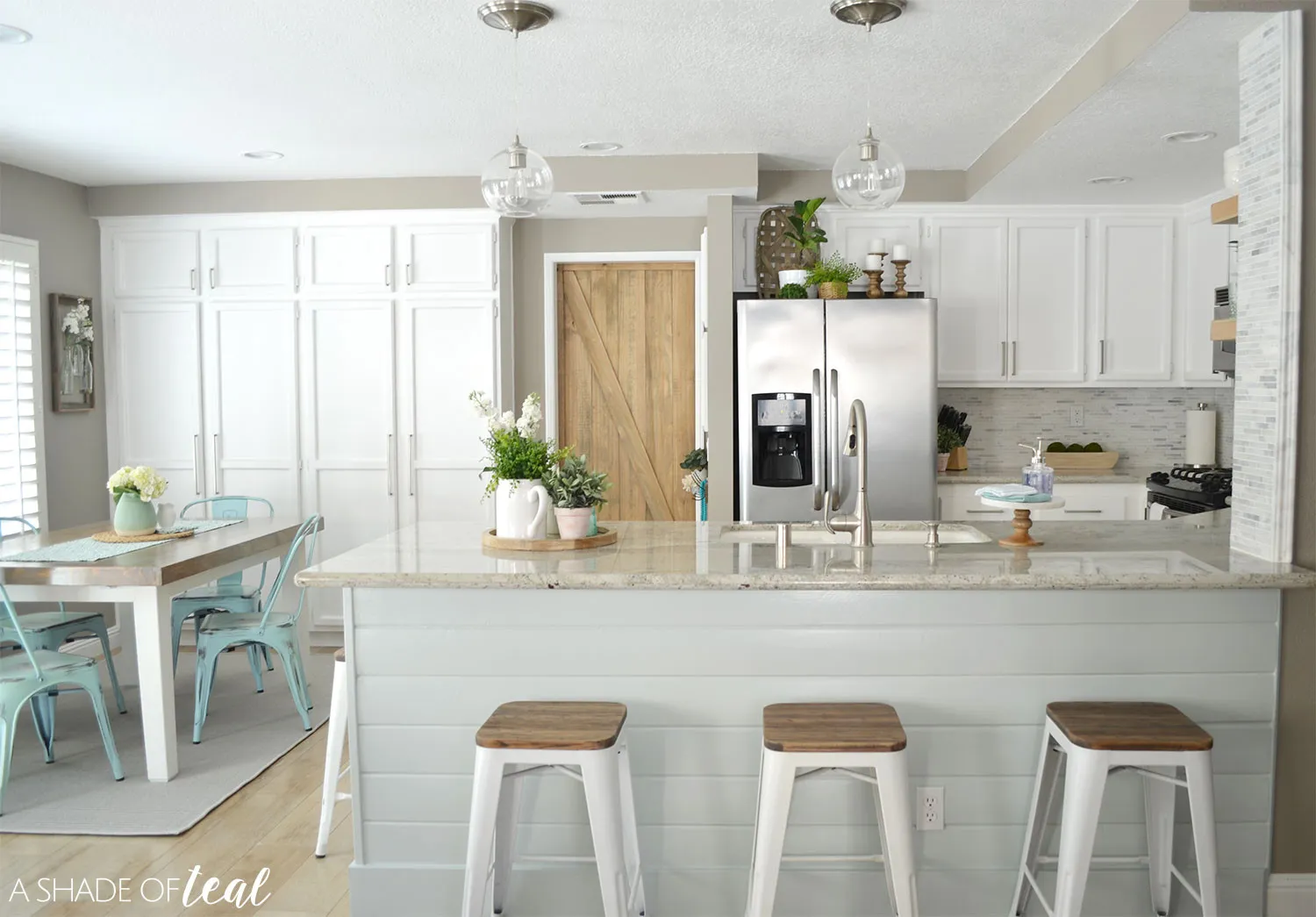
The psychology of color plays a crucial role in the impact of a paint color. Red is often linked to emotions such as love, anger, and excitement. It has the potential to increase energy levels, stimulate appetite, and even raise blood pressure. This is why it is often used in dining rooms and restaurants. In a kitchen, a touch of red can add warmth and vibrancy, making it a place where people want to gather and socialize. Using rustic reds with their softer tones helps to temper the intensity of the color, creating a welcoming ambiance without overwhelming the space. It’s a balance of creating excitement without causing distraction.
Red’s Role in Kitchens
In the context of a kitchen, red can be used in many different ways. It can be used on the walls, as an accent color, or on cabinetry to make a statement. Red can also be incorporated through accessories, such as dish towels, cookware, or appliances. Because kitchens are often gathering places, using red is a great way to invite people to feel relaxed and enjoy spending time. The versatility of red in the kitchen allows for personalized design choices that reflect the homeowner’s personality and lifestyle. This versatility makes red an enduring choice for kitchen decor.
Choosing the Right Rustic Red
Selecting the right rustic red for your kitchen involves careful consideration of several factors. It’s not just about picking a shade you like; the chosen color should harmonize with the existing elements of your kitchen. Also, you should consider your taste. This includes the natural light, the size of the room, and the overall style you want to achieve. This will help you select the ideal rustic red that enhances your kitchen’s charm. By taking the time to consider these aspects, you ensure the paint color complements the kitchen’s atmosphere.
Factors to Consider
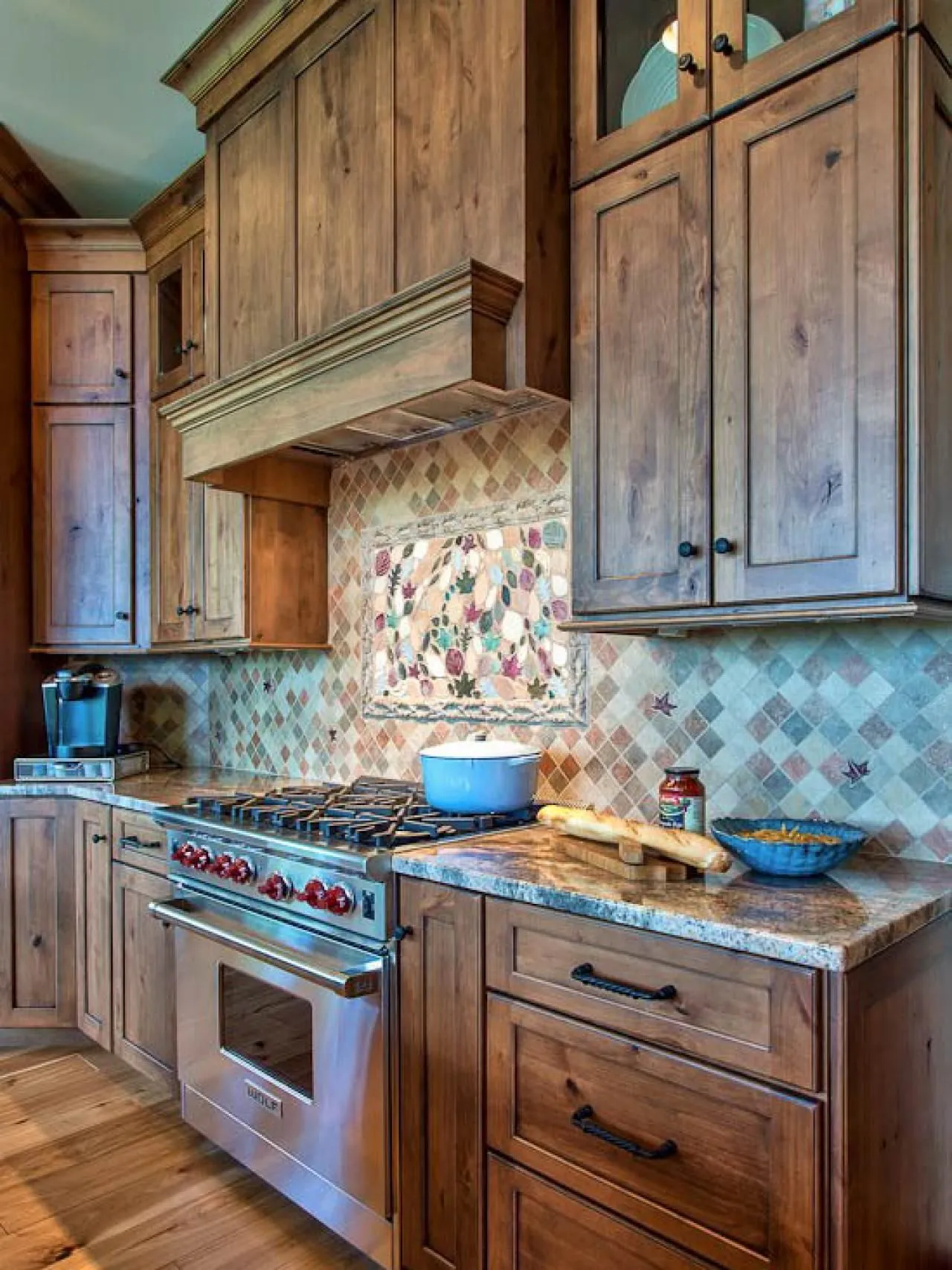
When selecting a rustic red paint, consider the kitchen’s size and lighting. Lighter shades of red can make a small kitchen appear more spacious, while darker tones can create a cozy feel in larger kitchens. Natural light plays a significant role; colors appear differently under sunlight compared to artificial light. Test paint samples on your walls in different lighting conditions to see how they look throughout the day. It’s also wise to observe the way the paint interacts with existing colors and design elements within your space. Take all these factors into consideration to pick the best paint for your kitchen.
Kitchen Size and Lighting
The size of your kitchen greatly influences the choice of red paint. Smaller kitchens can benefit from lighter, more open shades of red. These colors reflect light, making the room feel bigger and more airy. If you have a large kitchen, you can embrace richer, darker rustic reds to add depth and warmth without making the space feel confined. Lighting is also key. A kitchen with abundant natural light can handle a wider range of red hues, while a kitchen with limited natural light might benefit from brighter reds that reflect and amplify the existing light. Carefully assess your kitchen’s characteristics when choosing the paint color to achieve the desired effect.
Existing Design Elements
Before settling on a rustic red paint color, take note of existing design elements in your kitchen. Consider the materials, colors, and style of your cabinetry, countertops, and flooring. If you have wooden cabinets, think about whether the red will complement or clash with the wood’s tones. If your countertops are a busy pattern, opt for a more subdued red. Ensure the paint color harmonizes with the overall look and feel you want to achieve. Consider the overall style. A rustic kitchen may pair nicely with brick-reds, while a more modern space might suit a muted crimson. The goal is to create a cohesive and stylish kitchen design.
Popular Rustic Red Paint Shades
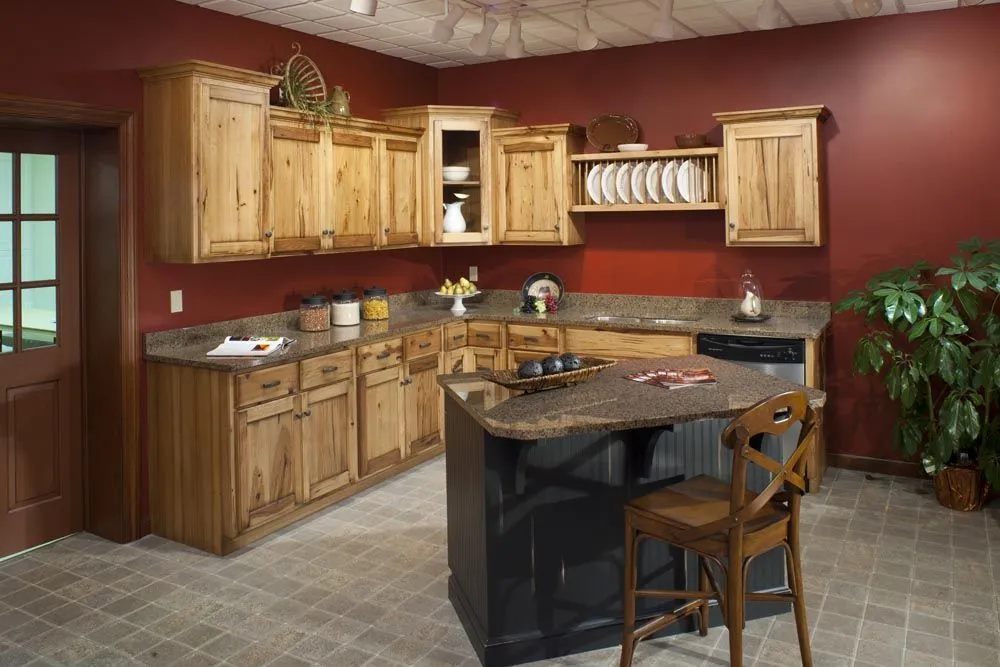
The world of rustic red paint offers a diverse palette. Each shade has unique qualities, and understanding these variations is essential to making the right choice. Various tones bring different aesthetics. These are the top types of rustic red paint colors to consider for your kitchen, each offering its own character. The best shade for you will depend on your kitchen’s unique elements, and your design preferences. The following list should provide a helpful starting point.
Earthy Reds
Earthy reds, infused with brown undertones, offer a grounded, organic feel. These shades evoke the warmth of the earth and blend seamlessly with natural materials like wood and stone. Colors like ‘Adobe Red’ or ‘Terracotta’ create a welcoming and comfortable environment, perfect for a kitchen intended to be a warm family space. These reds work well in kitchens with wooden furniture and exposed brick elements. They add an element of the outdoors. This type of red is ideal for those seeking a relaxed, cozy kitchen ambiance.
Brick Reds
Brick reds, with their subtle orange and brown undertones, capture the essence of aged brick. This makes them an excellent choice for adding a touch of history and character to your kitchen. Colors like ‘Barn Red’ or ‘Cranberry’ are versatile and can be used in various design schemes. Brick reds are particularly suited for kitchens with rustic or industrial aesthetics, complementing exposed beams, metal fixtures, and vintage-inspired decor. They provide a sense of authenticity and charm, making any kitchen feel unique.
Crimson and Burgundy
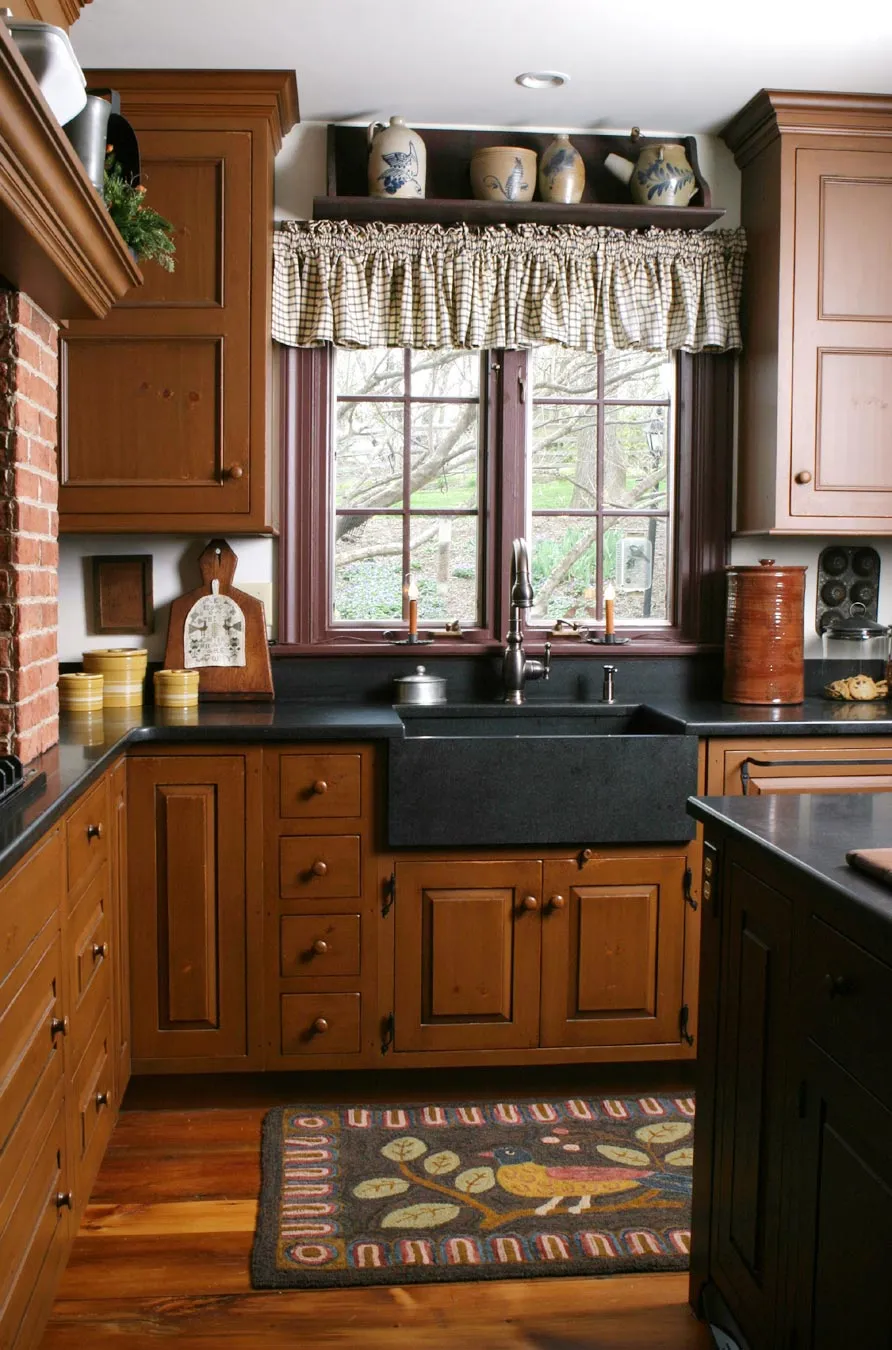
Crimson and burgundy offer deeper and more luxurious options within the rustic red spectrum. These colors often have hints of purple, which add sophistication. ‘Wine Red’ or ‘Burgundy’ can create a rich, inviting atmosphere. These colors are great if you’re designing a more elegant kitchen. They look fantastic when used on accent walls or kitchen islands, creating a striking focal point. They pair well with creamy whites and gold accents, adding a touch of opulence. These hues are a bold choice for a kitchen that exudes refined taste.
Matching Rustic Red with Other Colors
The right color combinations can enhance the beauty of rustic red in your kitchen, while the wrong ones can make the space feel unbalanced. Knowing how to combine rustic red with other colors, you can transform your kitchen. Some colors will act as excellent complements, while others will bring neutral balance. Choosing the right pairings enhances the warmth and beauty of your rustic red kitchen.
Complementary Colors
Complementary colors are opposite each other on the color wheel. For rustic red, the best options would be greens. Greens, particularly muted shades like olive or sage, create a visually appealing contrast. These pairings enhance each other’s tones, making the red appear more vibrant and the green more sophisticated. Consider using green for cabinetry or accessories to create a balanced look. This combination works well to create a bold yet harmonious design, making the kitchen feel lively and inviting.
Neutral Combinations
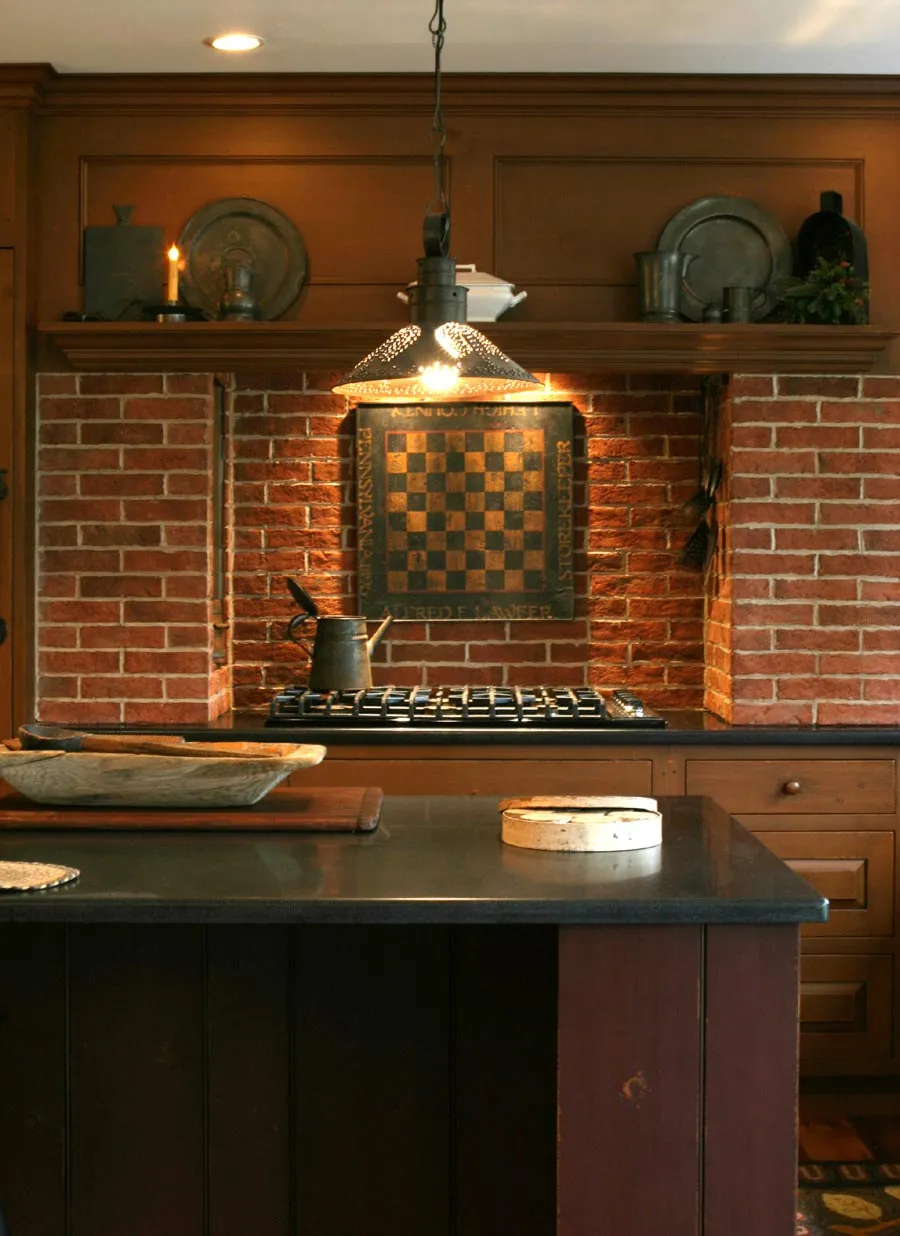
Neutral colors like white, cream, and beige are excellent for creating a balanced and timeless look. They provide a calming backdrop. Combining rustic red with these neutrals is an ideal way to soften the boldness of the red and prevent the kitchen from feeling overwhelming. Use white or cream for walls and cabinets to brighten the space. This pairing works wonders in smaller kitchens, where the neutral colors can make the area feel larger. Incorporate wooden elements to bring warmth, making the kitchen feel cozy and inviting.
Accent Colors
Accent colors can add personality and visual interest to your kitchen. Colors like charcoal gray or navy blue can enhance the richness of rustic red. These colors can be used for accent walls, kitchen islands, or decorative items. Black or dark gray adds a touch of sophistication and modernity. Navy blue complements the warmth of rustic red, creating a classic, stylish look. The key is to choose accent colors that complement the rustic red without competing with it. This ensures a cohesive and visually appealing design.
Applying Rustic Red in Your Kitchen
Applying rustic red in your kitchen goes beyond simply choosing a paint color. It involves the techniques, placement, and choices to achieve the desired aesthetic. From painting techniques to deciding which elements to highlight, the approach you take will greatly affect the final look. Implementing your chosen color effectively will bring your vision to life. You will achieve the desired style through the use of techniques and careful planning.
Painting Techniques
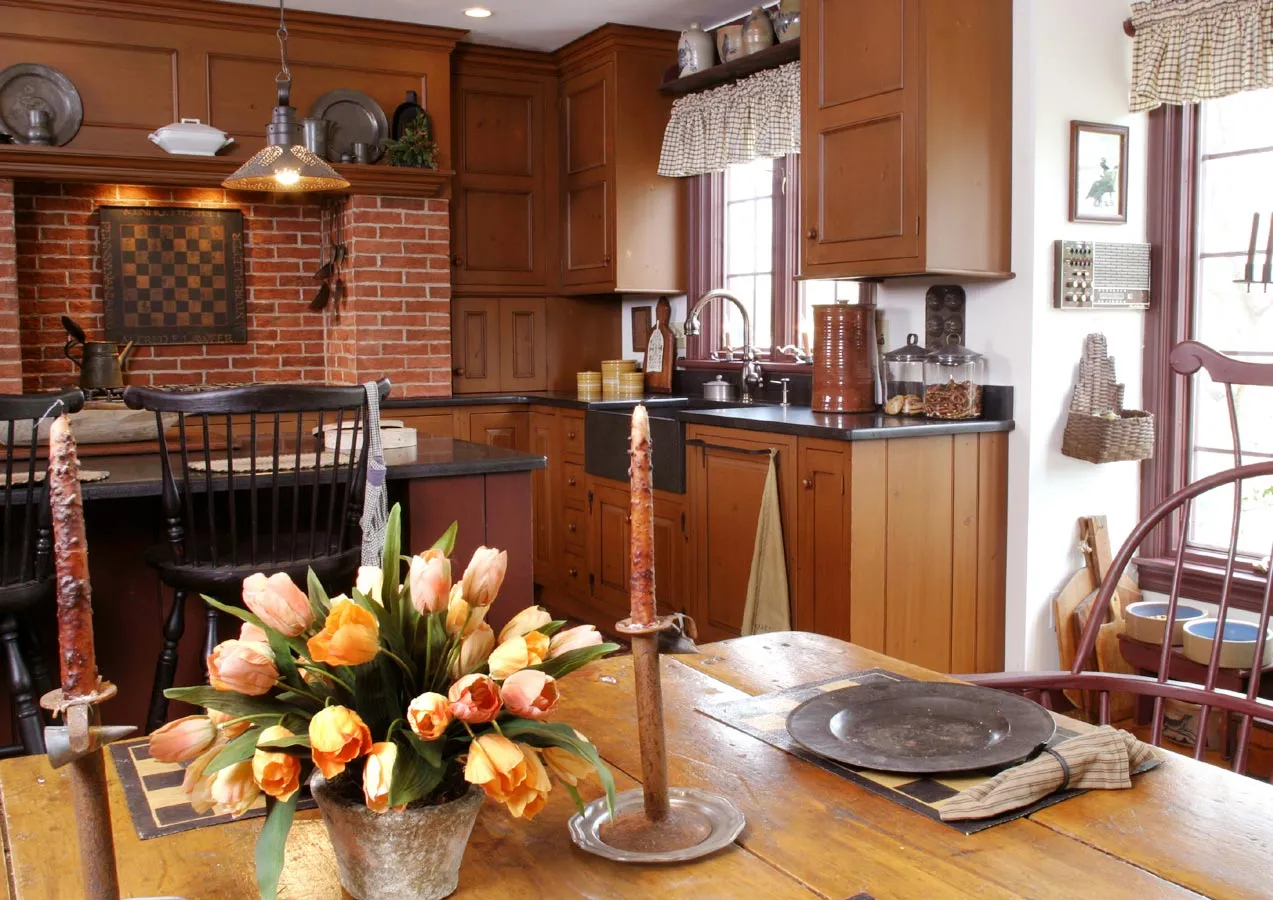
Preparing your kitchen walls before painting is essential for achieving a smooth finish. Begin by cleaning the walls and repairing any imperfections. Use a primer appropriate for the surface to ensure the paint adheres well and lasts longer. Apply at least two coats of rustic red paint for optimal color saturation and coverage. Employing these techniques creates a professional-looking finish. If you’re painting cabinetry, consider using a cabinet-specific paint, which is more durable. Proper painting techniques make sure that the color looks great and will last for a long time.
Accent Walls
An accent wall is a great way to introduce rustic red into your kitchen without overwhelming the space. Choose a wall to serve as the focal point, such as the wall behind your stove or sink. This will add visual interest and break up the space. When using rustic red for an accent wall, balance it with neutral colors on the remaining walls. This prevents the space from feeling small. It’s also a chance to use the color in a striking way. The correct placement of an accent wall can significantly enhance the character of your kitchen.
Cabinets and Islands
Painting your cabinets or kitchen island in rustic red is a bold choice, and it can transform your kitchen. If you choose this route, select a durable, cabinet-specific paint that withstands wear and tear. Pair the red cabinets with lighter countertops and backsplashes to create contrast. You might decide to paint only your kitchen island red, making it a beautiful focal point. Be sure that the red color you choose enhances the style of your kitchen and complements the existing decor. These decisions will make the red paint really stand out and have a big impact.
Decorating with Rustic Red
Decorating with rustic red involves more than just choosing the right paint color. Adding the right accessories and elements will tie your kitchen together. From textiles to accent pieces, the elements you choose can highlight the beauty of the paint. These details will bring the rustic red theme to life. Decorating with these elements is important to achieving the aesthetic you want in your kitchen. You’ll create a cohesive and inviting space.
Textiles and Accessories
Textiles and accessories are excellent ways to incorporate rustic red. Consider using red in dish towels, curtains, and table runners. Choose patterns and textures that complement the rustic style, such as linen or check patterns. Accessories like pottery, vintage signs, and wooden elements can enhance the aesthetic. Adding these types of accents ties the space together and adds charm. These touches not only bring the color to life but also make the kitchen feel more personal.
Bringing the Look Together
To truly embrace the rustic red theme, blend all the elements, from paint to accessories. Ensure that all the components work together. Blend rustic red paint with complementary colors and natural textures. Create a space that feels welcoming, inviting, and timeless. The goal is to create a cohesive and stylish kitchen that reflects your personality. A well-coordinated approach to decorating will make the space feel complete.
